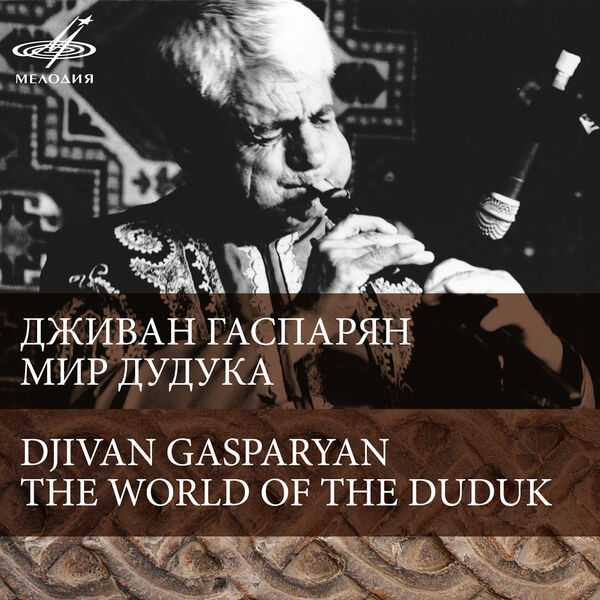
Performer: Djivan Gasparyan
Format: FLAC (tracks)
Label: Melodiya
Catalogue: MEL CD 3001545
Release: 1959-1983 / 2009
Size: 471 MB
Recovery: +3%
Scan: cover
01. A Breath of Coolness Could Be Felt
02. Brother Hunter I
03. Brother Hunter II
04. Hey, Djan, Hey Djan
05. In This World
06. Ploughman
07. Garden
08. You Have Been a Wise Man Since Olden Times
09. Dle Yaman
10. As a Nightingale You Have Tormented Yourself
11. Darling, Why Is It Necessary to Burn Again?
12. Dark, Black Clouds
13. There Is a Word in My Possession
14. Alagyaz
15. Eshkhemed
16. Sleep, My Child
17. The Shepherd’s Call
18. The Kazakhs
19. Kalosi Prgen
20. Таrаn-Taran
21. The Mountain Girl
22. The Song of Araz
Djivan Gasparyan is frequently hailed “the soul of Armenia” and his Duduk is called the soul of the apricot tree. People’s Artist of Armenia, Professor Djivan Gasparyan turned 80 years old on 12 October 2008. Many legends exist about Djivan Gasparyan and his Duduks. Some of them are true: for instance, that the duduk was mastered by him virtually on his own and during the Great Patriotic War (i.e. World War II) he even played on the street in order to provide for his younger brother and sister. However, it is not true that the enchanting slow tunes of the duduk reflect only the tragic history of the Armenian people. Yes, the duduk is indeed made of the apricot tree, which grows in Armenia, and in learned Latin is precisely labeled as prunus armeniaca – “the Armenian prune”. Nevertheless, first of all, the duduk is well-known for over several centuries in Iran, in Georgia, in Azerbaijan and in Turkey, where Gasparyan has been invited numerous times – both to give lessons and to perform in major festivals in Istanbul and Teheran. And, secondly, the duduk has been initially a wedding instrument. The title of Gasparyan’s first record, which received acclaim in the West at the end of the 1980s, “I will not be sad in this world”, was perceived as a response to the earthquake in Spitak, but in reality it presents a line of the Caucasian bard Sayat-Nova, which continues as follows: “if you are with me”. Yes, in the repertoire of “Uncle Djivan” (as he calls himself in Russian) one can find mournful melodies with the untranslatable sorrowful exclamation “Dle Yaman” (CD 1, tr № 9), but there is also the famous impressionistic landscape “A Breath of Coolness Could Be Felt” (CD 1, tr № 1), as well as the lullaby “Sleep, my Child” (CD 2, tr № 5). It is true, though, that immediately after the war the young duduk performer as part of the Armenian delegation performed in the Kremlin in front of comrade Stalin and evoked such admiration from the “Leader of Peoples” that the latter bestowed on him a royal gift – of a watch (albeit, during the lean post-war times the Leader’s gift had to be sold to obtain a basic livelihood). It is true, though, that the quantity of various Hollywood blockbusters, whom Gasparyan’s duduk endows with a characteristic Russian-Oriental-Mystical color, are already in the dozens – “Russian House” and “Onegin”, “The Raven” and “The Gladiator”. It is also true that Professor Gasparyan has been touring for a long time along with a rather large ensemble of Armenian folk instruments, and whenever it is necessary gathers together a whole orchestra of his students, which could be twenty and even fifty in number. Nonetheless, according to tradition the music for the duduk is monophonic – both the folk music and the professional (based on the modal system, which is common virtually for the entire Middle East – the mugam or the maqam). As it is customary in virtually all the Oriental country, the soloist necessarily performs in accompaniment of a second musician, which holds the “tonic,” which is called “dham” in Armenian. It is precisely this genuinely traditional style and repertoire which is presented as well on the album “The World of the Duduk”.